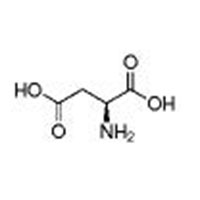Synonyms
asparagic acid
1-amino-1,2-carboxyethane
δ-aspartic acid
d-Asp
QVYZ1VQ &&D or R Form
(-)-Aspartic acid
(2R)-2-Aminosuccinic acid
MFCD00002616
(2R)-2-aminobutanedioic acid
hydrogen D-aspartate
L-Asparticacid
Product Description
L-Aspartic acid is a non-essential amino acid that is widely used in the food industry as a flavor
enhancer, acidity regulator, and nutrient supplement. As a food-grade product, it is produced through a
fermentation process using natural substrates.
One of the key properties of L-Aspartic acid is its ability to enhance the umami flavor of foods, which
is one of the five basic tastes. It is commonly used in savory products such as soups, broths, sauces,
and snacks to improve their overall taste and flavor. In addition, L-Aspartic acid is also used as an
acidity regulator in various food products, including carbonated beverages, fruit juices, and dairy
products. It helps to maintain the pH balance of these products and prevent spoilage.
Another important application of L-Aspartic acid is its use as a nutrient supplement. It is an important
precursor for the synthesis of other amino acids, such as L-methionine and L-threonine, which are
essential for protein synthesis in the body. As a result, L-Aspartic acid is often added to sports
drinks, energy bars, and other nutritional supplements to support muscle growth and recovery.
L-Aspartic acid is generally recognized as safe (GRAS) by the United States Food and Drug Administration
(FDA) and is approved for use in food products in many countries around the world. It is available in
both powder and granular forms, making it easy to incorporate into a variety of food and beverage
applications.
Overall, L-Aspartic acid is a versatile and widely used food-grade product that provides a range of
benefits to the food industry. Its unique flavor-enhancing properties, acidity regulation capabilities,
and nutritional benefits make it an essential ingredient in many food products today.





